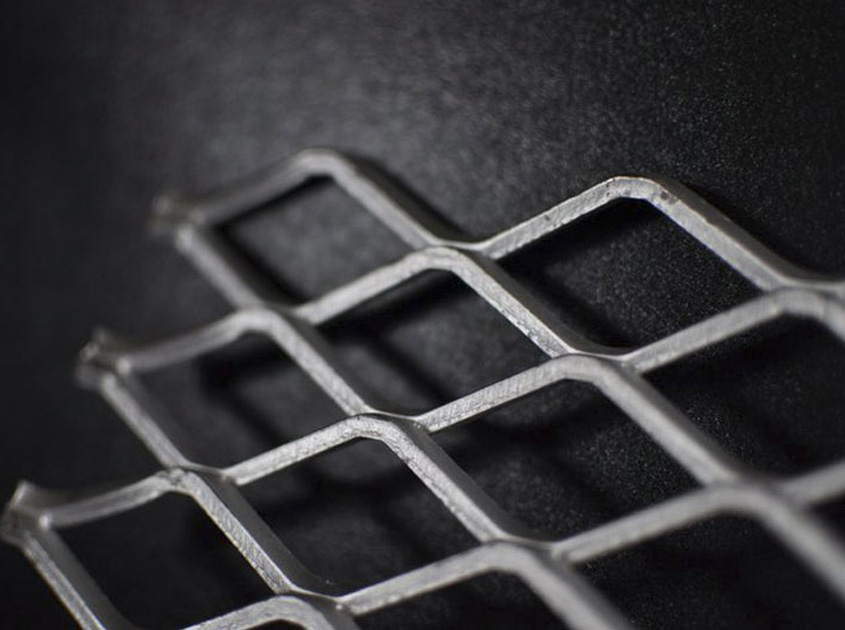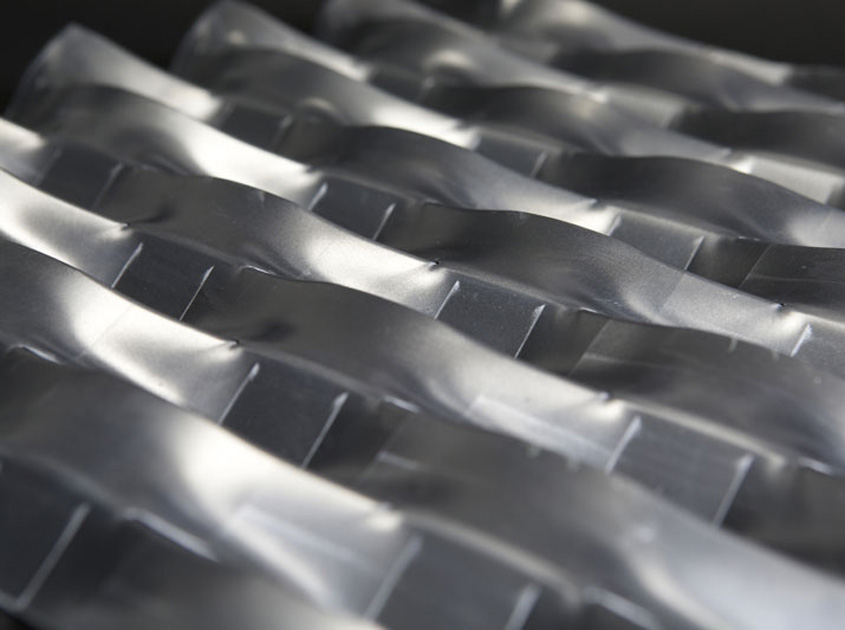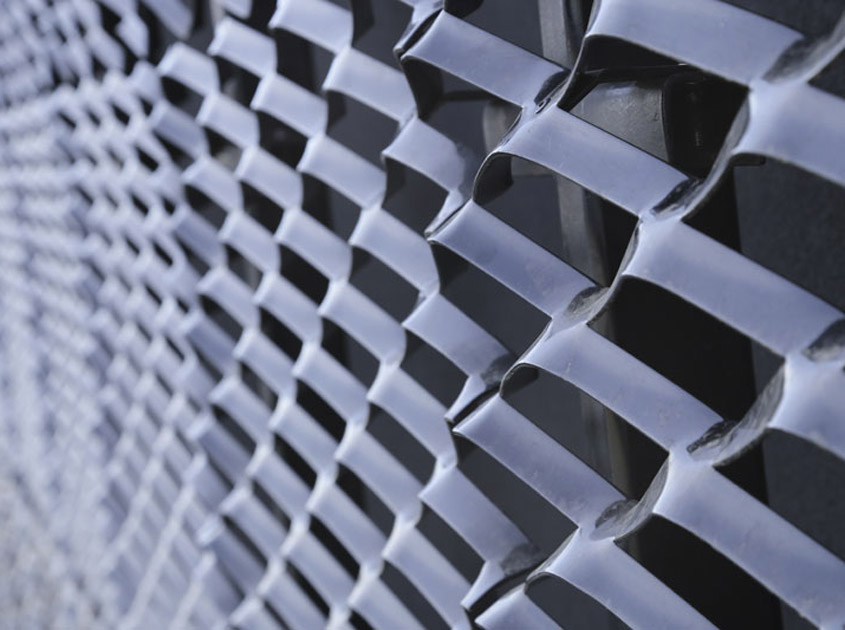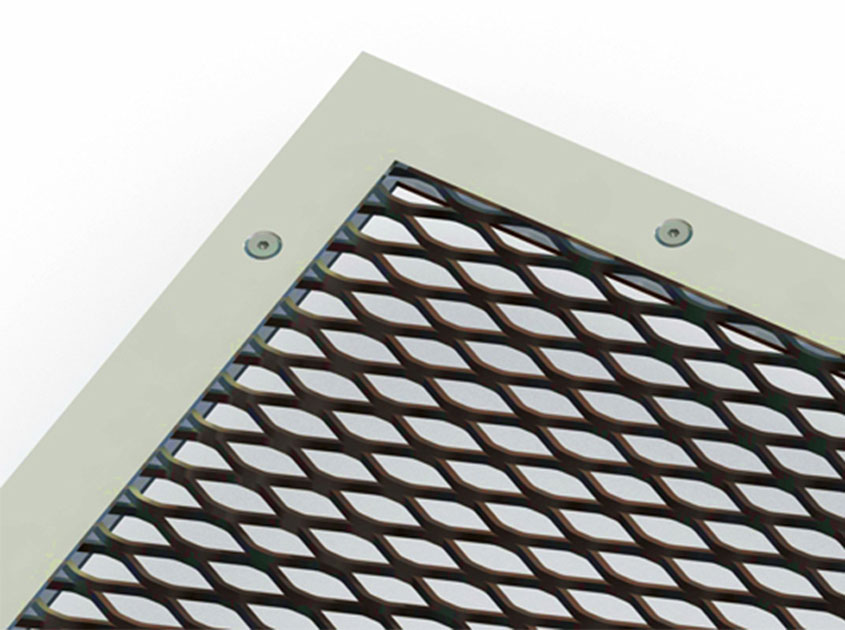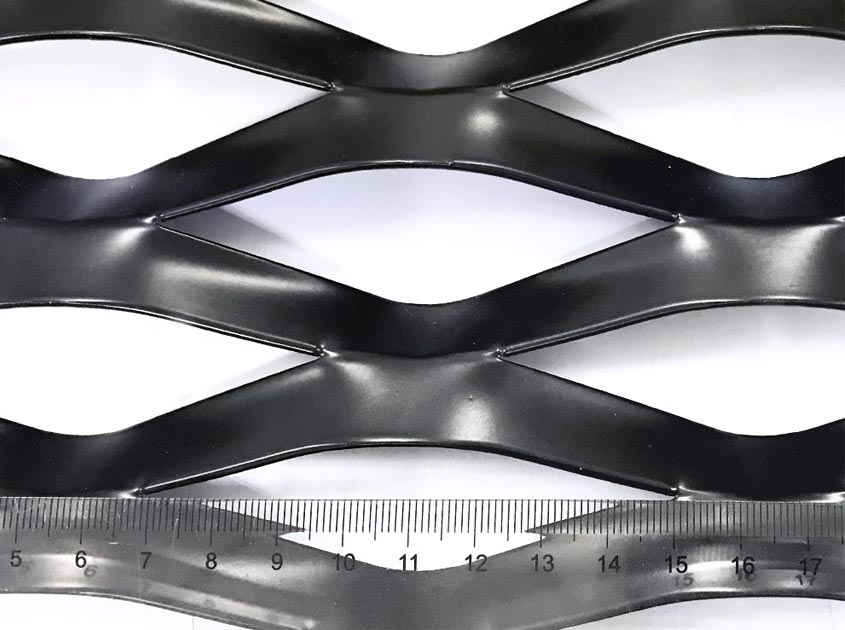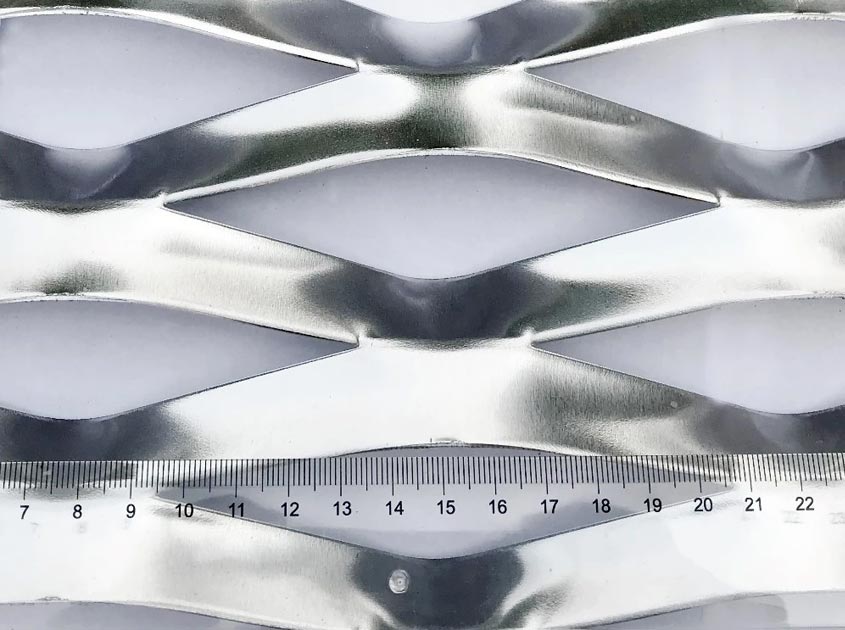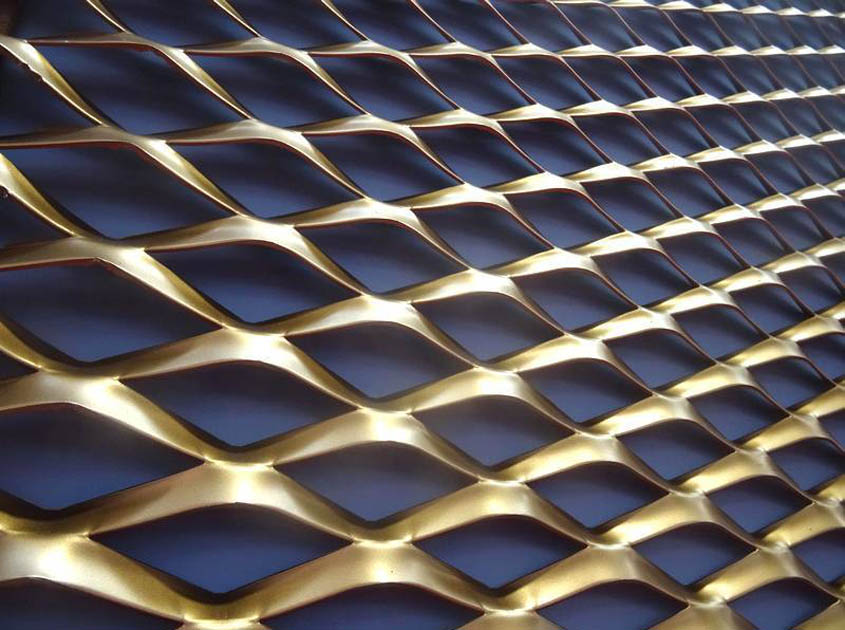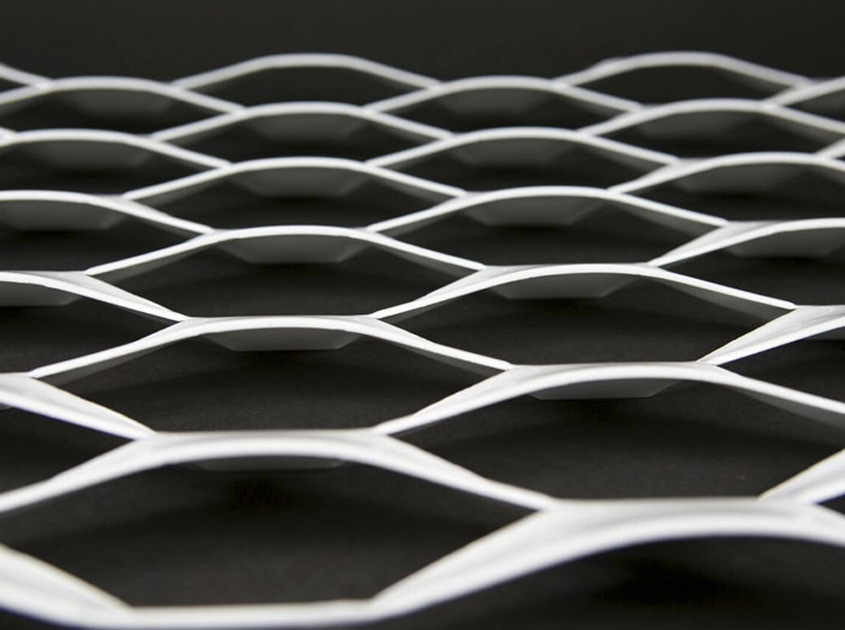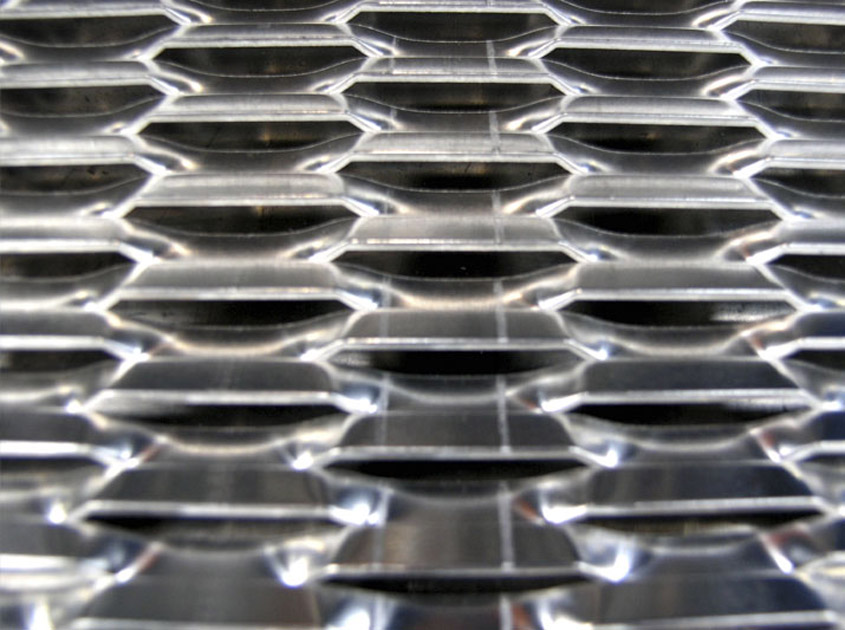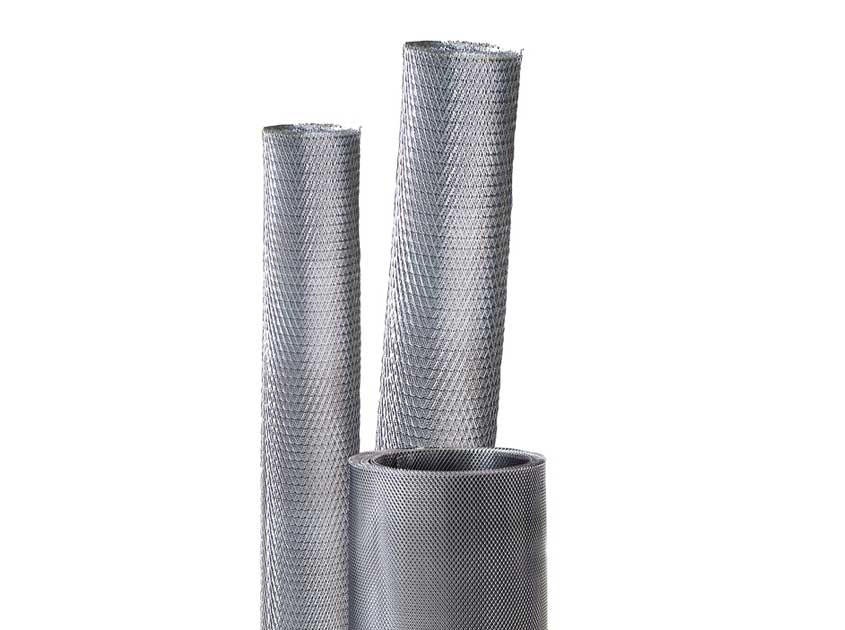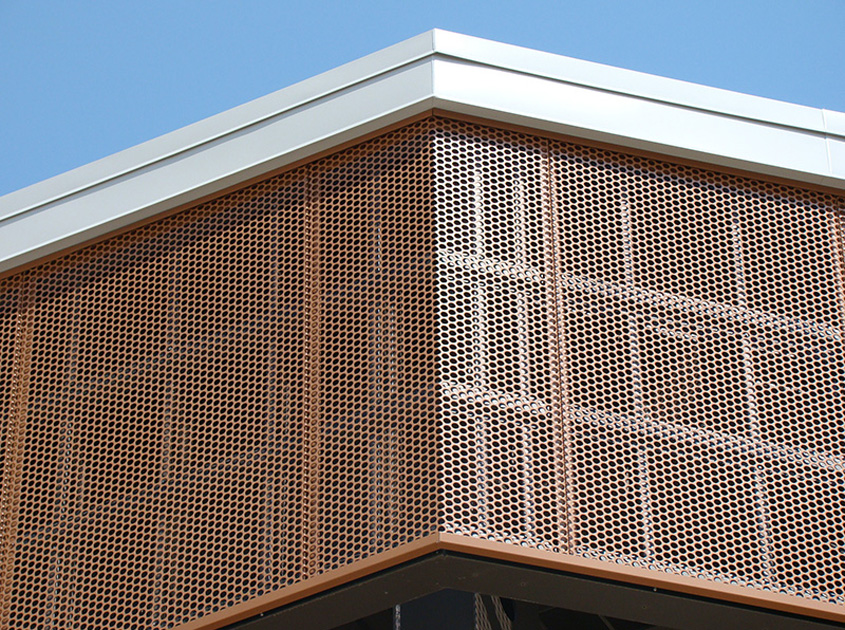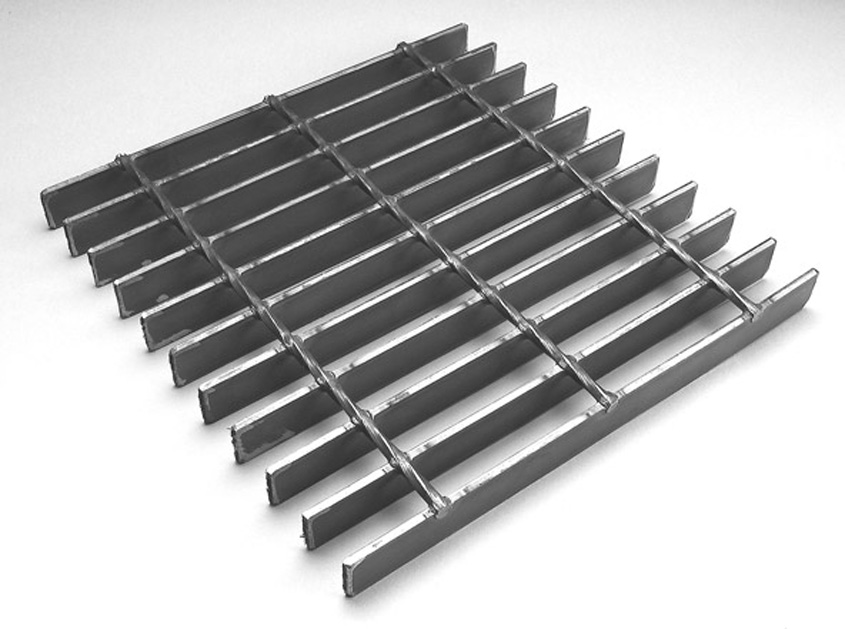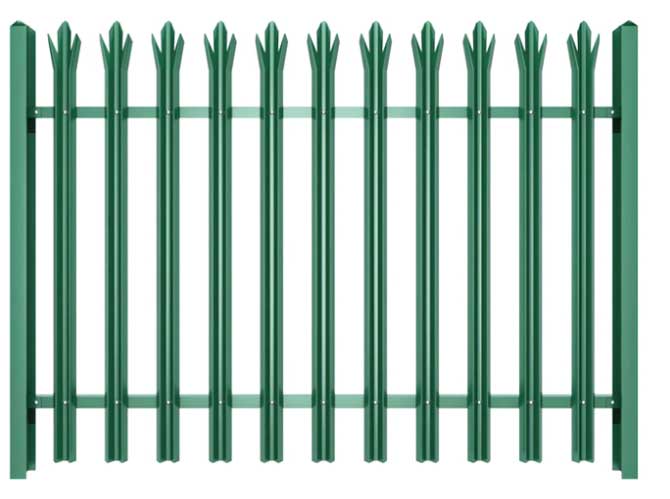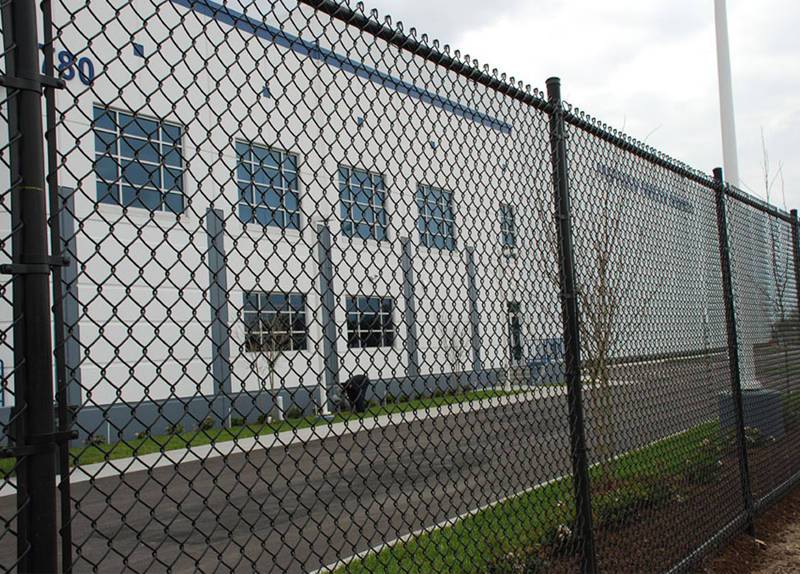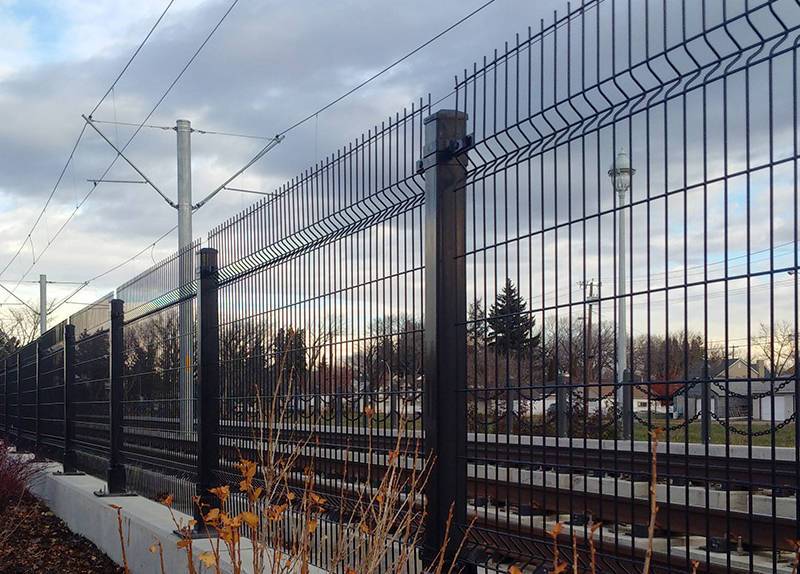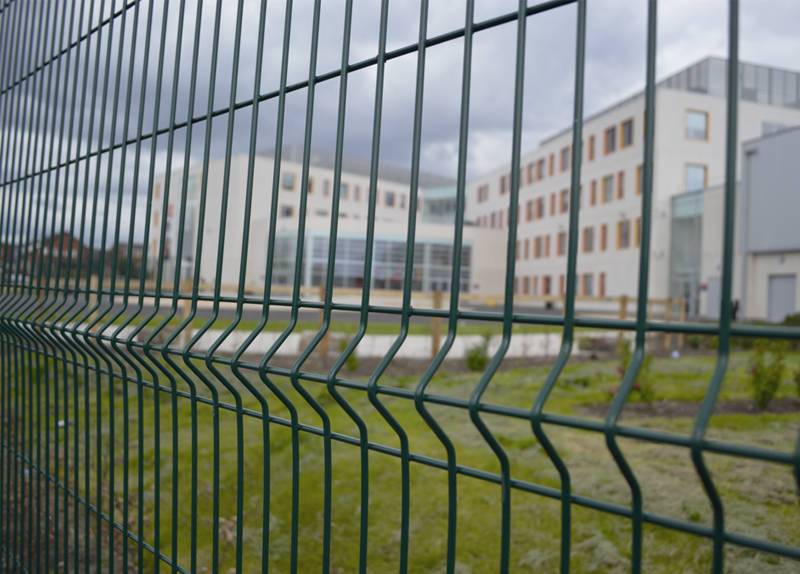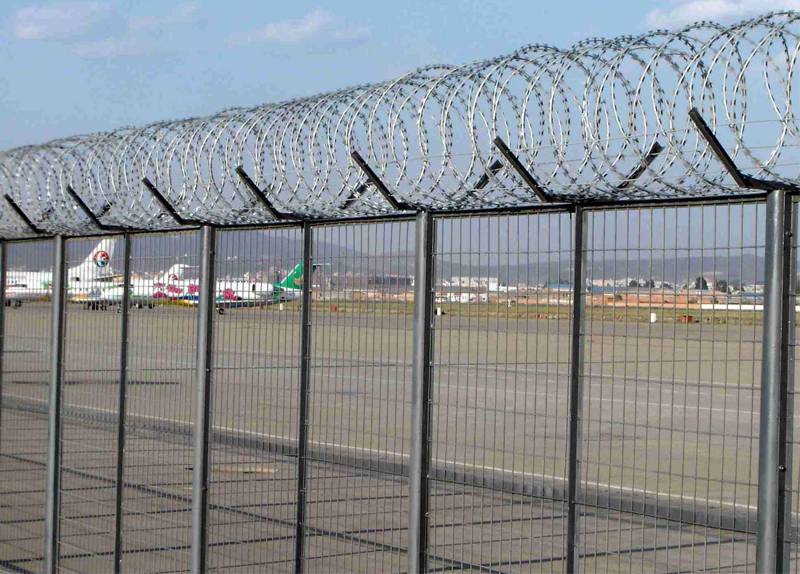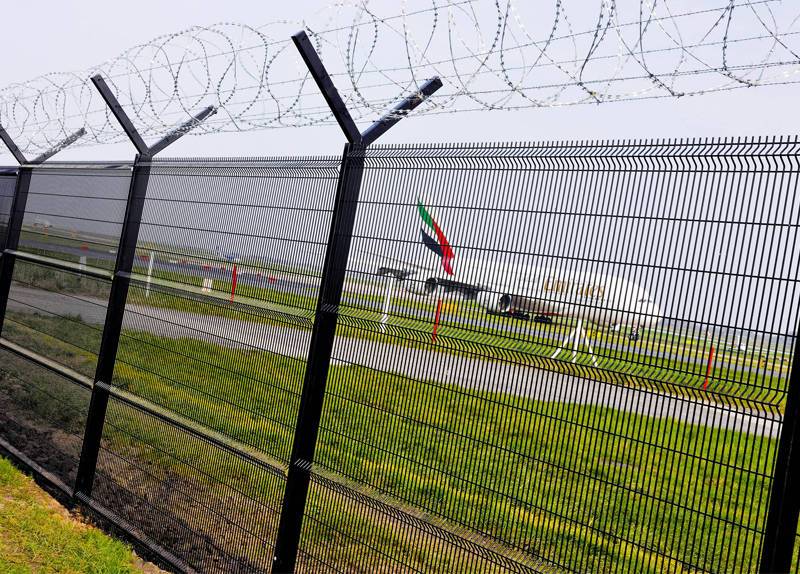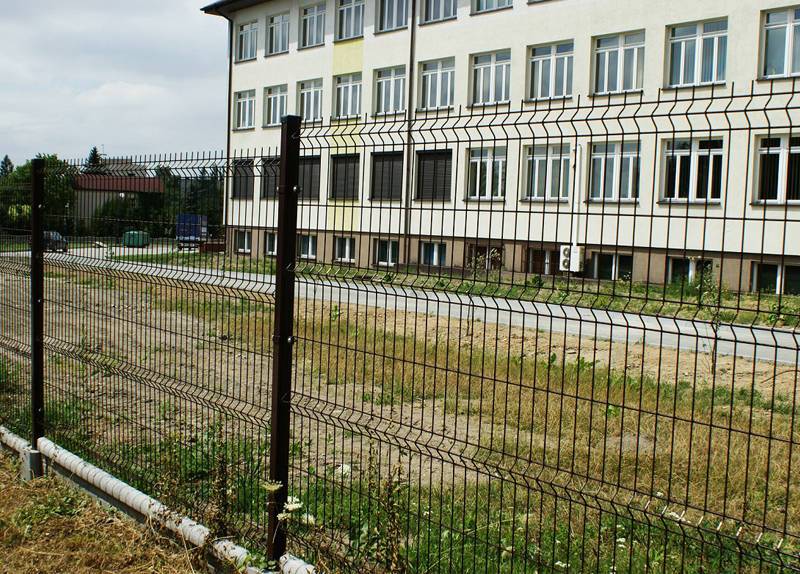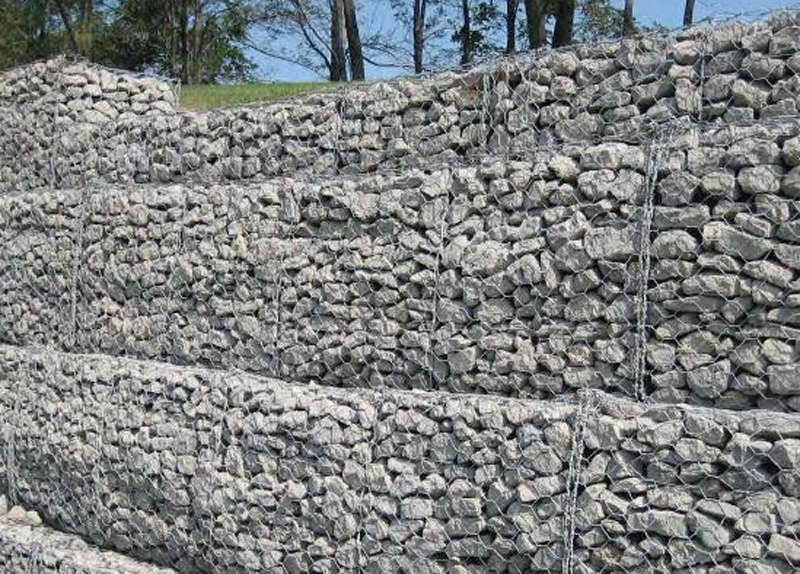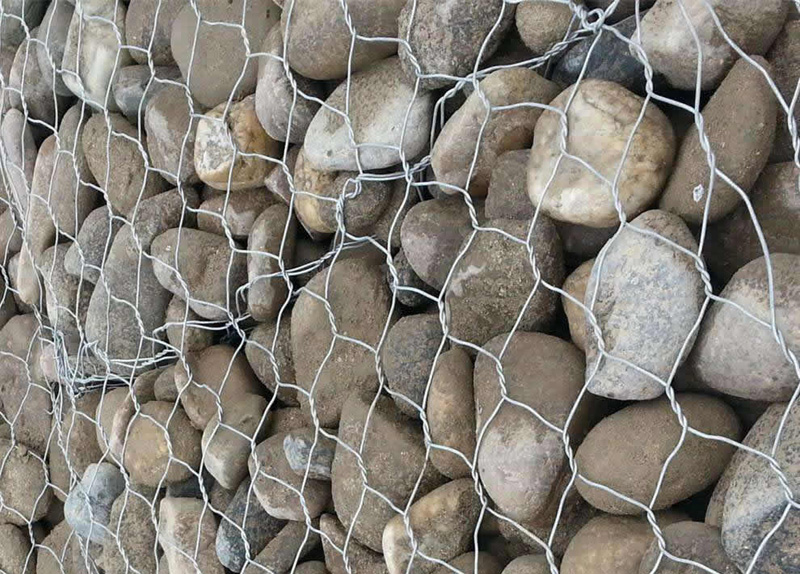Présentation:
Expanded metal mesh has a wide range of uses, graceful shapes , strong processing capability. A major advantage of expanded is that the mesh is formed from a single piece of material and the process is not wasteful and therefore cost effective.
Expanded metal mesh Main use: metal surface treatment and after processing, are widely used in large venues, both inside and outside decorative, aerospace, petroleum, chemical industry, metallurgy, medicine, paper making, filtration, breeding, packing, mechanical facilities, protection, handicraft manufacturing, high-grade speaker grille, children's seat, baskets, basket, highway protection, and heavy machinery, boilers, oil mines, locomotives, tonner steamship, work platform, staircase, walkway. Also can be used for construction, highway and bridge as reinforced use.
| The difference between common expanded metal and flattened expanded metal. |
| Common expanded metal: this expanded metal is made by machine stamping, stretching. It has not been processed. metal strand and bond and plane has a certain point of view, this structure increases strength and hardness of the metal, permeability, and has a good anti-skid, reinforced performance.Flattened expanded metal: flattened expanded metal is made from common expanded metal by machine rolling flat. After a flattened, expanded metal strand and bond are in the same horizontal plane, so flattened expanded metal smooth, shiny; and flatten the meal from thickness to be thinner, strand width wider, larger mesh than the former. Generally flattened expanded metal is often applied to the wear and mesh with the requirements of the situation. |
| Expanded Metal Finishing: |
| 1、 Cleaning |
| Expanded metal is easily get oiled during the manufacturing process and should be cleaned before finishing. The most common cleaning method is to use a non-corrosive solvent to rinse, wipe. |
| 2、Galvanized |
| It is a popular and common form of finishing. Galvanized is divided into hot-dip galvanizing and cold galvanized, which is more commonly used as a protective layer approach. So that make the expanded metal corrosion resistance and rust resistance, beautiful. |
| 3、Oxidation |
| This surface treatment widely used in aluminum decorative wire mesh, color variety, according to the practical application and customer needs to choose. Oxidized mesh smooth, bright. |
| 4、Paint, coated |
| After paint and coated, expanded metal has good anti-corrosion, light smooth performance, and also to prevent edge burr or hole burr. |
Caractéristiques:
Corrosion resistance,
Durable
Easily Assembled,
Beautiful looking
Anti-skid
Wear-resistance
Strong tensile strength with less heavier
Spécifications:
| Carbon Steel-Standard | ||||||||
| Specification | Design Size | Opening Strands | Size of Strands | Overall Thickness | Open Area | |||
| (Inches) | (Inches) | (Inches) | (Inches) | (%) | ||||
| SWD | LWD | SWO | LWO | Width | Thickness | |||
| 1/4" #20 | 0.25 | 1 | 0.125 | 0.718 | 0.072 | 0.036 | 0.135 | 45 |
| 1/4" #18 | 0.25 | 1 | 0.11 | 0.718 | 0.072 | 0.048 | 0.147 | 43 |
| 1/2" #20 | 0.5 | 1.2 | 0.438 | 0.938 | 0.072 | 0.036 | 0.14 | 80 |
| 1/2" #18 | 0.5 | 1.2 | 0.438 | 0.938 | 0.088 | 0.048 | 0.172 | 72 |
| 1/2" #16 | 0.5 | 1.2 | 0.375 | 0.938 | 0.087 | 0.06 | 0.175 | 65 |
| 1/2" #13 | 0.5 | 1.2 | 0.312 | 0.938 | 0.096 | 0.092 | 0.204 | 57 |
| 3/4" #16 | 0.923 | 2 | 0.813 | 1.75 | 0.101 | 0.06 | 0.21 | 78 |
| 3/4" #13 | 0.923 | 2 | 0.75 | 1.688 | 0.096 | 0.092 | 0.205 | 76 |
| 3/4" #10 | 0.923 | 2 | 0.75 | 1.625 | 0.144 | 0.092 | 0.29 | 72 |
| (13ga) | ||||||||
| 3/4" #9 | 0.923 | 2 | 0.688 | 1.562 | 0.15 | 0.134 | 0.312 | 68 |
| (10ga) | ||||||||
| 1" #16 | 1 | 2.4 | 0.938 | 2.062 | 0.087 | 0.06 | 0.192 | 82 |
| 1-1/2"#18 | 1.33 | 3 | 1.313 | 2.625 | 0.068 | 0.048 | 0.14 | 90 |
| 1-1/2"#16 | 1.33 | 3 | 1.25 | 2.625 | 0.108 | 0.06 | 0.23 | 85 |
| 1-1/2"#13 | 1.33 | 3 | 1.188 | 2.5 | 0.105 | 0.092 | 0.202 | 85 |
| 1-1/2"#10 | 1.33 | 3 | 1.188 | 2.5 | 0.138 | 0.092 | 0.284 | 80 |
| (13ga) | ||||||||
| 1-1/2"#9 | 1.33 | 3 | 1.125 | 2.375 | 0.144 | 0.134 | 0.312 | 76 |
| (10ga) | ||||||||
| 1-1/2"#6 | 1.33 | 3 | 1 | 2.313 | 0.203 | 0.198 | 0.433 | 69 |
| (6ga) | ||||||||
| 2"#10 | 1.85 | 4 | 1.625 | 3.438 | 0.164 | 0.092 | 0.327 | 82 |
| (13ga) | ||||||||
| Stainless Steel-Standard | ||||||||
| Specification | Design Size | Opening Strands | Size of Strands | Overall Thickness | Open Area | |||
| (Inches) | (Inches) | (Inches) | Inches) | (%) | ||||
| SWD | LWD | SWO | LWO | Width | Thickness | |||
| 1/4" #18 | 0.25 | 1 | 0.12 | 0.62 | 0.087 | 0.05 | 0.15 | 30 |
| 1/2" #18 | 0.5 | 1.2 | 0.437 | 0.937 | 0.087 | 0.05 | 0.164 | 70 |
| 1/2" #16 | 0.5 | 1.2 | 0.437 | 0.937 | 0.087 | 0.062 | 0.164 | 70 |
| 1/2" #13 | 0.5 | 1.2 | 0.325 | 0.875 | 0.119 | 0.093 | 0.225 | 70 |
| 3/4" #18 | 0.923 | 2 | 0.812 | 1.75 | 0.106 | 0.05 | 0.2 | 85 |
| 3/4" #16 | 0.923 | 2 | 0.812 | 1.75 | 0.106 | 0.062 | 0.202 | 83 |
| 3/4" #13 | 0.923 | 2 | 0.75 | 1.687 | 0.107 | 0.093 | 0.202 | 80 |
| 3/4" #9 | 0.923 | 2 | 0.687 | 1.562 | 0.152 | 0.16 | 0.14 | 67 |
| (10ga) | ||||||||
| 1-1/2" | 1.333 | 3 | 1.25 | 2.75 | 0.115 | 0.062 | 0.222 | 85 |
| #16 | ||||||||
| 1-1/2" | 1.33 | 3 | 1.25 | 2.625 | 0.115 | 0.093 | 0.222 | 83 |
| #13 | ||||||||
| 1-1/2"#9 | 1.333 | 3 | 1.125 | 2.5 | 0.144 | 0.134 | 0.312 | 76 |
| (10ga) | ||||||||
| Aluminum-Standard | ||||||||
| Specification | Design Size | Opening Strands | Size of Strands | Overall Thickness | Open Area | |||
| (Inches) | (Inches) | (Inches) | (Inches) | (%) | ||||
| 1/2" .051 | 0.5 | 1.2 | 0.375 | 0.937 | 0.093 | 0.051 | 0.158 | 65 |
| 1/2" .081 | 0.5 | 1.2 | 0.375 | 0.937 | 0.093 | 0.081 | 0.186 | 60 |
| 3/4" .051 | 0.923 | 2 | 0.813 | 1.175 | 0.109 | 0.051 | 0.2 | 78 |
| 3/4".081 | 0.923 | 2 | 0.75 | 1.68 | 0.129 | 0.081 | 0.22 | 76 |
| (Lt.) | ||||||||
| 3/4".081 | 0.923 | 2 | 0.75 | 1.68 | 0.165 | 0.081 | 0.3 | 69 |
| (Lt.) | ||||||||
| 3/4".125 | 0.923 | 2 | 0.688 | 1.68 | 0.169 | 0.125 | 0.305 | 68 |
| 1-1/2".081 | 1.333 | 3 | 1.188 | 2.5 | 0.128 | 0.081 | 0.24 | 85 |
| 1-1/2".125 | 1.333 | 3 | 1.188 | 2.5 | 0.162 | 0.125 | 0.3 | 79 |
Note: Special size and specifications can be made according to customers requires.
Technologie:
| Material:stainless steel, carbon steel, brass , aluminum , titanium , nickel , Al-Mg alloy |   |
| Strand and Bond | |
| Expanded metal is composed of strands and bonds. Strands form the sides of the expanded metal openings. Bonds are where the strands intersect. In other words, the bond is where each diamond shaped opening is connected with the next opening. |  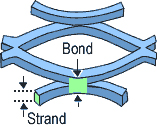 |
| SWD | |
| SWD (Short Way of the Diamond) is the distance from the middle of the bond on one side to the middle of the bond on the opposite side. |  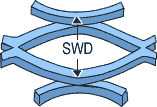 |
| LWD | |
| LWD (Long Way of the Diamond) is the distance across the largest dimension of the diamond measured halfway between the diamonds. |  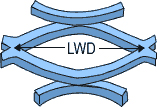 |
| SWO | |
| SWO (Short Way of the Opening) is the width of the opening of the shortest side of the diamond. SWO does not include the strand width, where SWD (Short Way of the Diamond) does. |  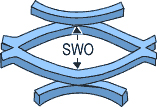 |
| LWO | |
| LWO (Long Way of the Opening) is the length of the opening of the longest side of the diamond. LWO does not include the strand width, where LWD (Long Way of the Diamond) does. |  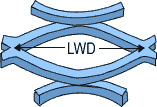 |
| Open Area | |
| Expanded metal contains open spaces (the diamond-shaped openings) and material. Open area is the total area of the diamond openings divided by the total area of the sheet or roll of expanded metal and is expressed as a percent. In other words, open area describes how much of the expanded metal is open space. If expanded metal has a 60 percent open area, then 60 percent of the expanded metal is open space and 40 percent is material. | |
| Gauge or Thickness | |
| Thickness is the measurement from the top surface to bottom surface of the expanded metal piece. Gauge is the most common measurement, but thickness can also be measured in fractional inches or millimeters. |   |
| Width and Length | |
| Length is the measure of the longest side of the expanded metal sheet or cut-to-size piece. Width is the measure of the shortest side of the sheet or cut-to-size piece. |   |
| Determining SWD, LWD Direction | |
| The illustration to the right shows the correct way to designate SWD and LWD dimensions in relation to the length or width. | |
Stock sheets are like the one shown above LWD Direction Parallel to Length |
LWD Direction Parallel to Width |
Désignation de Produit: Expanded Metal Mesh




